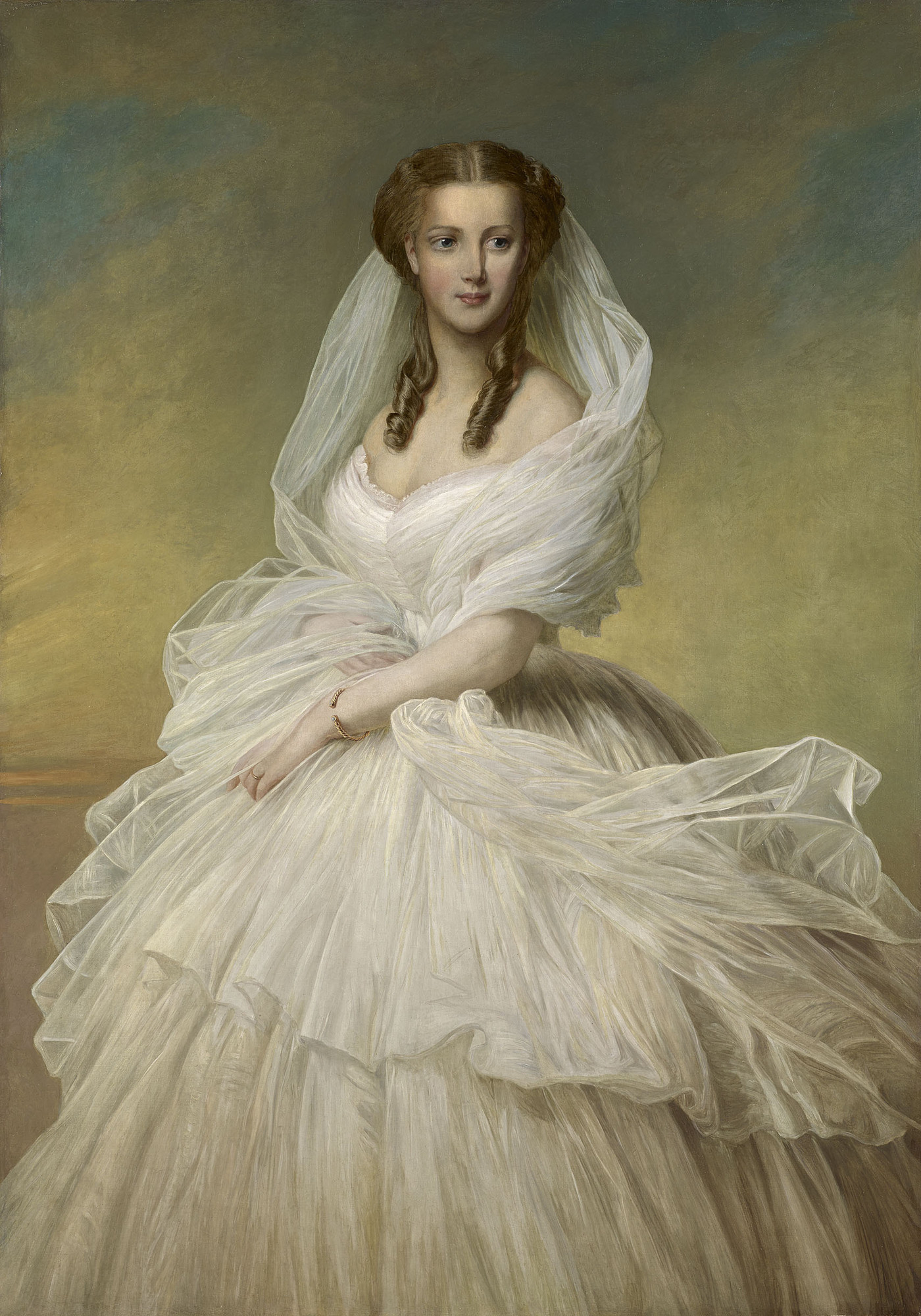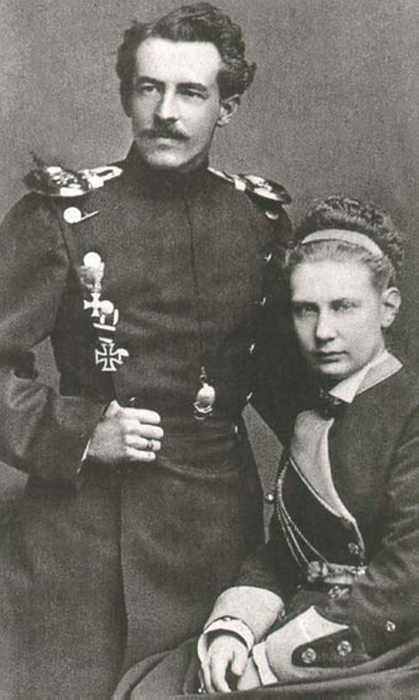|
Charles I Of Württemberg
Charles (german: Karl Friedrich Alexander; 6 March 18236 October 1891) was King of Württemberg, from 25 June 1864 until his death in 1891. Early life Charles was born on 6 March 1823 in Stuttgart as the son of King William I and his third wife Pauline Therese (1800–1873). As the king's eldest son he became Crown Prince of Württemberg. He studied in Berlin and Tübingen. Marriage and King of Württemberg On 13 July 1846 Karl married Grand Duchess Olga Nikolaievna of Russia, the daughter of Tsar Nicholas I and Charlotte of Prussia. (Charlotte was a daughter of Frederick William III of Prussia and of Louise of Mecklenburg-Strelitz; she took the name Alexandra Feodorovna upon her marriage into the Russian imperial family.) Karl acceded to the throne of Württemberg upon his father's death in 1864. The couple had no children, perhaps because of Karl's homosexuality.Sabine Thomsen. ''Die württembergischen Königinnen. Charlotte Mathilde, Katharina, Pauline, Olga, Charlotte � ... [...More Info...] [...Related Items...] OR: [Wikipedia] [Google] [Baidu] |
Richard Lauchert
Richard Lauchert, a Germany, German portrait painter, was born at Sigmaringen in 1823. He studied at Munich in 1839, went for improvement to Paris in 1845, and settled at Berlin in 1860. He was mostly employed by the courts of Germany, England, and Russia, and painted portraits with great taste and ability, but many of his earlier productions are inferior to those of his later period. He died at Berlin in 1868. References * External links 1823 births 1868 deaths 19th-century German painters 19th-century German male artists German male painters People from Sigmaringen {{Germany-painter-stub ... [...More Info...] [...Related Items...] OR: [Wikipedia] [Google] [Baidu] |
Homosexuality
Homosexuality is romantic attraction, sexual attraction, or sexual behavior between members of the same sex or gender. As a sexual orientation, homosexuality is "an enduring pattern of emotional, romantic, and/or sexual attractions" to people of the same sex. It "also refers to a person's sense of identity based on those attractions, related behaviors, and membership in a community of others who share those attractions." Along with bisexuality and heterosexuality, homosexuality is one of the three main categories of sexual orientation within the heterosexual–homosexual continuum. Scientists do not yet know the exact cause of sexual orientation, but they theorize that it is caused by a complex interplay of genetic, hormonal, and environmental influences and do not view it as a choice. Although no single theory on the cause of sexual orientation has yet gained widespread support, scientists favor biologically based theories. There is considerably more evidence supportin ... [...More Info...] [...Related Items...] OR: [Wikipedia] [Google] [Baidu] |
Order Of The Crown (Württemberg)
The Order of the Württemberg Crown (''Orden der Württembergischen Krone'') was an order of chivalry in Württemberg. History First established in 1702 as the St.-Hubertus-Jagdorden (Order of St Hubert), in 1807 it was renamed the "Ritterorden vom Goldenen Adler" (Order of the Golden Eagle) by Frederick I, and on 23 September 1818 renewed and restructured (at the same time as the civil orders) by William I as the "Order of the Württemberg Crown" with (initially) 3 classes (grand cross, komtur, knight). In 1918 the order was expanded and changed. Its motto reads : Furchtlos und treu (fearless and loyal). Until 1913 the higher orders were restricted to the nobility. In descending order, its ranks were: # Grand cross for sovereigns # Grand cross # Commander with star (since 1889) # Commander # Honour cross (''Ehrenkreuz''; ''Steckkreuz'' since 1892) # Knight (since 1892 with golden lions, and since 1864 also with a crown, as a special honour) # Gold service medal (''Verdienstmeda ... [...More Info...] [...Related Items...] OR: [Wikipedia] [Google] [Baidu] |
Old Castle (Stuttgart)
, native_name_lang = de , image = AltesSchlossStuttgart.JPG , image_size = , image_alt = From Schlossplatz , image_caption = From Schlossplatz , map_type = Baden-Württemberg#Germany , map_alt = Location in Baden-Württemberg , map_caption = Location in Baden-Württemberg , map_size = , coordinates = , map_dot_label = Location in Baden-Württemberg , relief = , former_names = , alternate_names = , etymology = , status = Complete , cancelled = , topped_out = , building_type = , architectural_style = , classification = , location = Schillerplatz, Stuttgart-Center , address = , location_city = Stuttgart , location_country = Germany , altitude = , current_tenants = , namesake = , groundbreaking_date = , start_date = , topped_out_date = , completion_date = , opened_date = , inauguration_date = , relocated_date = , renovation_date = , closing_date = , demolition_date = , cost = , ren_cost = , client = , owner = , la ... [...More Info...] [...Related Items...] OR: [Wikipedia] [Google] [Baidu] |
German Empire
The German Empire (),Herbert Tuttle wrote in September 1881 that the term "Reich" does not literally connote an empire as has been commonly assumed by English-speaking people. The term literally denotes an empire – particularly a hereditary empire led by an emperor, although has been used in German to denote the Roman Empire because it had a weak hereditary tradition. In the case of the German Empire, the official name was , which is properly translated as "German Empire" because the official position of head of state in the constitution of the German Empire was officially a "presidency" of a confederation of German states led by the King of Prussia who would assume "the title of German Emperor" as referring to the German people, but was not emperor of Germany as in an emperor of a state. –The German Empire" ''Harper's New Monthly Magazine''. vol. 63, issue 376, pp. 591–603; here p. 593. also referred to as Imperial Germany, the Second Reich, as well as simply Germany, ... [...More Info...] [...Related Items...] OR: [Wikipedia] [Google] [Baidu] |
Prussia
Prussia, , Old Prussian: ''Prūsa'' or ''Prūsija'' was a German state on the southeast coast of the Baltic Sea. It formed the German Empire under Prussian rule when it united the German states in 1871. It was ''de facto'' dissolved by an emergency decree transferring powers of the Prussian government to German Chancellor Franz von Papen in 1932 and ''de jure'' by an Allied decree in 1947. For centuries, the House of Hohenzollern ruled Prussia, expanding its size with the Prussian Army. Prussia, with its capital at Königsberg and then, when it became the Kingdom of Prussia in 1701, Berlin, decisively shaped the history of Germany. In 1871, Prussian Minister-President Otto von Bismarck united most German principalities into the German Empire under his leadership, although this was considered to be a " Lesser Germany" because Austria and Switzerland were not included. In November 1918, the monarchies were abolished and the nobility lost its political power during ... [...More Info...] [...Related Items...] OR: [Wikipedia] [Google] [Baidu] |
Battle Of Sadowa
A battle is an occurrence of combat in warfare between opposing military units of any number or size. A war usually consists of multiple battles. In general, a battle is a military engagement that is well defined in duration, area, and force commitment. An engagement with only limited commitment between the forces and without decisive results is sometimes called a skirmish. The word "battle" can also be used infrequently to refer to an entire operational campaign, although this usage greatly diverges from its conventional or customary meaning. Generally, the word "battle" is used for such campaigns if referring to a protracted combat encounter in which either one or both of the combatants had the same methods, resources, and strategic objectives throughout the encounter. Some prominent examples of this would be the Battle of the Atlantic, Battle of Britain, and Battle of Stalingrad, all in World War II. Wars and military campaigns are guided by military strategy, wherea ... [...More Info...] [...Related Items...] OR: [Wikipedia] [Google] [Baidu] |
Austro-Prussian War
The Austro-Prussian War, also by many variant names such as Seven Weeks' War, German Civil War, Brothers War or Fraternal War, known in Germany as ("German War"), (; "German war of brothers") and by a variety of other names, was fought in 1866 between the Austrian Empire and the Kingdom of Prussia, with each also being aided by various allies within the German Confederation. Prussia had also allied with the Kingdom of Italy, linking this conflict to the Third Independence War of Italian unification. The Austro-Prussian War was part of the wider rivalry between Austria and Prussia, and resulted in Prussian dominance over the German states. The major result of the war was a shift in power among the German states away from Austrian and towards Prussian hegemony. It resulted in the abolition of the German Confederation and its partial replacement by the unification of all of the northern German states in the North German Confederation that excluded Austria and the other South ... [...More Info...] [...Related Items...] OR: [Wikipedia] [Google] [Baidu] |
Grand Duke Konstantin Nikolayevich Of Russia
Grand Duke Konstantin Nikolayevich of Russia (21 September 1827 – 25 January 1892) was the Emperor's Viceroy of Poland from 1862 to 1863. Early life Konstantin Nikolayevich was born as the second son of Nicholas I and his wife, Charlotte of Prussia, daughter of Frederick William III of Prussia and his first wife, Louise of Mecklenburg-Strelitz. Biography The Grand Duke was a supporter of the liberal (sometimes referred to as "enlightened") bureaucrats during the period of his brother Alexander II's great reforms. He served as chairman of the Imperial Russian Geographical Society (founded in 1845). The Geographical Society was subordinate to the Ministry of Internal Affairs, which was home to a conspicuous number of , including Nikolai Miliutin. In addition to his support of and participation in the 1861 emancipation of the serfs, the Grand Duke also instituted reforms in the Imperial Russian Navy from 1854. Konstantin's brother, Alexander II of Russia was supposed ... [...More Info...] [...Related Items...] OR: [Wikipedia] [Google] [Baidu] |
Grand Duchess Vera Konstantinovna
Grand Duchess Vera Konstantinovna of Russia (16 February 1854 – 11 April 1912), ) was a daughter of Grand Duke Konstantine Nicholaievich of Russia. She was a granddaughter of Tsar Nicholas I and first cousin of Tsar Alexander III of Russia. She had a difficult childhood marked by illness and tantrums. In 1863, while her father was Viceroy of Poland, she was given away to be raised by her childless uncle and aunt, King Karl and Queen Olga of Württemberg. Vera's condition improved in their home and she outgrew her disruptive behavior. In 1871 she was legally adopted by Karl and Olga, who arranged her marriage in 1874 to Duke Eugen of Württemberg (1846–1877), a member of the Silesian ducal branch of the family. Her husband died suddenly three years later. Vera, only twenty-three years old, did not remarry, dedicating herself to her twin daughters. At the death of King Karl in 1891, Vera inherited a considerable fortune and she turned her home into a cultural gathering plac ... [...More Info...] [...Related Items...] OR: [Wikipedia] [Google] [Baidu] |
Wilhelm George , the Dutch national anthem
{{Disambiguation ...
Wilhelm may refer to: People and fictional characters * William Charles John Pitcher, costume designer known professionally as "Wilhelm" * Wilhelm (name), a list of people and fictional characters with the given name or surname Other uses * Mount Wilhelm, the highest mountain in Papua New Guinea * Wilhelm Archipelago, Antarctica * Wilhelm (crater), a lunar crater See also * Wilhelm scream, a stock sound effect * SS ''Kaiser Wilhelm II'', or USS ''Agamemnon'', a German steam ship * Wilhelmus "Wilhelmus van Nassouwe", usually known just as "Wilhelmus" ( nl, Het Wilhelmus, italic=no; ; English translation: "The William"), is the national anthem of both the Netherlands and the Kingdom of the Netherlands. It dates back to at least 1572 ... [...More Info...] [...Related Items...] OR: [Wikipedia] [Google] [Baidu] |





